Let’s start by doing a Google search: “2019 Design Trends”.
Take me away, Google.
Let’s see: Gradients, Serifs, Asymmetrical Design…Moody Color Palettes.
Déjà vu.
Let’s check the next article: Asymmetrical Design, Serifs, Gradients…Isometric Design.
Isometric design? I animated with isometrics back in June. Hmmm…
As I continue to search through the never-ending list of “2019 Design Trends” articles, I’m beginning to feel like I stepped into a machine that took the “9” in “2019” and flipped it 180 degrees.
This was the experience I encountered earlier this year. And I thought to myself: Surely, there must exist some exciting trends that are emerging as we head for the new year. If I were to base this article off of the top search results for the aforementioned Google prompt, I might as well stop right here and redirect you to this article I wrote in February.
Instead, I thought I’d do something different. Something novel: start paying closer attention to the websites I visited, documenting the exciting things I encountered on Instagram or anywhere else on the web. Sometimes this would happen in the evening as I sat on my couch, one hand holding my phone, one hand holding a piece of Dominos pizza (this type of research really does only require a single hand). To take note and document the digital experiences I encountered that held my attention.
Because I owe it to myself and to you, the reader, not to add another carbon copy to the list of Google’s “2019 Design Trends” search results. There are plenty of other bloggers and marketing agencies alike that can fill that role.
I’ll do you one better:
A list of design trends on the verge that you likely won’t see listed anywhere else.
Let’s dive in. Before we start, however, I think it’s important to note that I use term “design” loosely here, as it’s employed as more of a signpost that refers to an ever-evolving world of the digisphere disciplines.
Via Vimeo
Giving The User Control
People like feeling in control, and brands seem to be taking notice. Vimeo ads are populating a custom color palette for users to customize the UI right before their eyes. And before they click on the ad. As with the example I’ve provided here, “Customize every last detail” is the theme. Samsung has begun rolling out ads for their latest tablet series that invite users to write directly on the screen within the ad. The days of a passive website whereby users simply scroll through content in the 2D space are coming to an end as consumers expect to be able to interact with their web environment. While 360/VR technologies are allowing users to virtually step into physical spaces, the web is giving way to further interaction and customization, allowing users to literally alter their environment in a more involved way than we’ve ever seen. And I believe we’re only seeing the tip of the iceberg here.
Via Instagram and Adobe Stock
Collagistic Surrealism
While this may sound like some type of surgical procedure from the year 2085, it refers to the method of employing multiple elements together for a single, surrealistic composition. This can be seen in the ad space as well as the video space, as in the example below whereby Instagram employs four seemingly different scenes with a climber ascending each of them to promote their new IGTV (This seems like the perfect time to mention a trend we’ll be seeing a whole lot more of in 2019: vertical video).
Via WeTransfer
Time-Sensitive Geometry
While geometry is nothing new to the design or web space (geometric shapes are notorious for never going out of style, having the benefit of quick load time and speaking clearly in a way that other elements cannot), subtle color shifts of these geometric elements over time are key for bringing user attention back to a screen. We live in a sea of 1,000 windows and time-sensitive geometry is doing its best to play lighthouse.
The Rise Of The Anti-Stock
It’s well known that using a stock photo for marketing efforts not unique to its portal will bring bad juju. Any marketer in-the-know will tell you this. What’s less known are the incredible photographers out there offering their high-quality, diverse photography in high resolution completely for free, with no licensing required. Authenticity is more important than ever, and these free resources can be a treasure trove for marketers and designers alike, especially if the resources and know-how aren’t available to capture assets on their own. And for capturing that trendy look that might not be found on one of the popular stock photography sites.
Via Luum.com
Beyond The Form
I just checked Nostradomus’ notes and have confirmed that they do not include: “Mankind will be having fun filling out forms in the year 2019”. Fun really is starting to take its place in the world of the form field. It’s not breaking news that designers and developers are creating interesting form fields that go beyond the traditional hamburger, but companies are slapping on new tasty ingredients: custom form fields that are an experience in their own right, having the user truly feeling like they’re having a good time.
Via Omnivirt
3D Photos
With Facebook’s recent launch of 3D photos just a few weeks ago, 3D photos are seeing astounding engagement: Upwards of +300% over traditional 2D content. Companies are scrambling to develop wands for the average marketer to work the magic of taking their preexisting assets and take them into the third dimension. Expect to see top brands taking advantage of this new type of photo going into the new year.
Via Medium
The Bold Art of Absurdity
Companies like Medium are leaving room for their customers who may not want to click on any specific piece of content to leave it up to the “paper-fortune-teller”: a call-to-action prefaced with the phrase “Do you believe in destiny?” that takes users to a random article instead. It is this bold, adventurous spirit that I’m seeing more of as companies trend towards a more relaxed, conversational tone with their content.
Via Mailchimp
You’ve Got Mail
Literally. Companies like Mailchimp are beginning to roll back out services for the printed marketing material. It’s no secret that a printed piece holds a special power that a digital dispatch just can’t touch, but it is surprising to be heading into 2019 seeing companies roll them out on a larger scale. It’s time to go to the mattresses to wow the customer so accustomed to the digispatch.
Via Mailchimp
The Anti-Tech Movement
As gargantuan tech companies continue to get gargantuanted, they’re trending towards letting loose with their visual languages rather than tidying up. Playful, whimsical elements help them become more relatable with their customer base on an individual level.
Visit Amelia Island
Cinemagraph Stock Rises
With the rising popularity of cinemagraphs as a creative asset for advertising throughout 2017 and 2018, we’re about to see the rise of companies offering cinemagraphs in the stock environment for all to use and enjoy. While these used to be the skilled dispatches of creative marketing companies, the everyday marketer will soon have access to these treasures. If you’ve read this far and you don’t know what a cinemagraph is, we’ve got you covered.
Via Media Monks
To Infinity
With the nature of social media ads being that they loop, more marketing efforts are trending towards creative loops that don’t have a clear beginning and end and can be clearly understood by a viewer catching on at any point.













